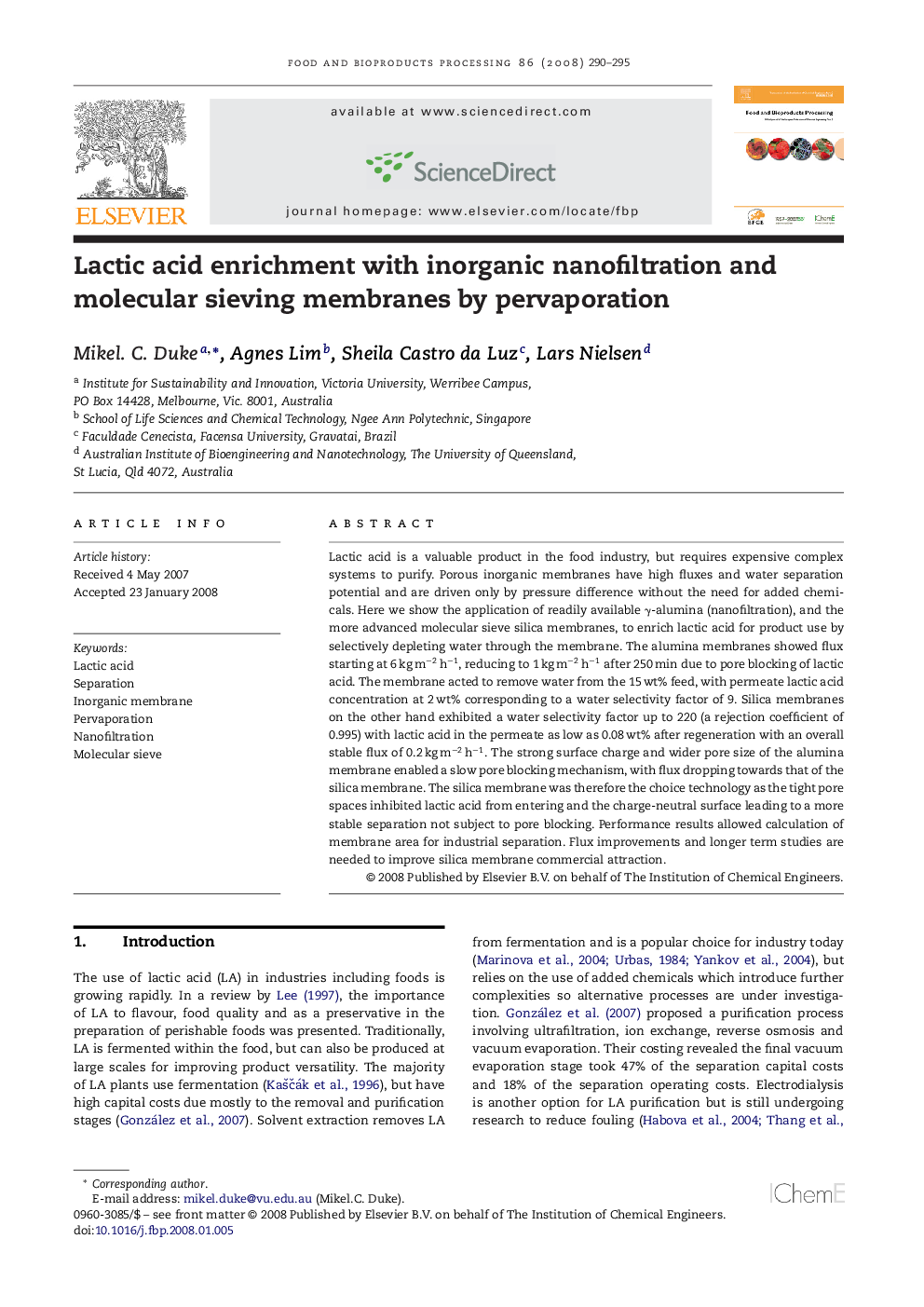| Article ID | Journal | Published Year | Pages | File Type |
|---|---|---|---|---|
| 19355 | Food and Bioproducts Processing | 2008 | 6 Pages |
Lactic acid is a valuable product in the food industry, but requires expensive complex systems to purify. Porous inorganic membranes have high fluxes and water separation potential and are driven only by pressure difference without the need for added chemicals. Here we show the application of readily available γ-alumina (nanofiltration), and the more advanced molecular sieve silica membranes, to enrich lactic acid for product use by selectively depleting water through the membrane. The alumina membranes showed flux starting at 6 kg m−2 h−1, reducing to 1 kg m−2 h−1 after 250 min due to pore blocking of lactic acid. The membrane acted to remove water from the 15 wt% feed, with permeate lactic acid concentration at 2 wt% corresponding to a water selectivity factor of 9. Silica membranes on the other hand exhibited a water selectivity factor up to 220 (a rejection coefficient of 0.995) with lactic acid in the permeate as low as 0.08 wt% after regeneration with an overall stable flux of 0.2 kg m−2 h−1. The strong surface charge and wider pore size of the alumina membrane enabled a slow pore blocking mechanism, with flux dropping towards that of the silica membrane. The silica membrane was therefore the choice technology as the tight pore spaces inhibited lactic acid from entering and the charge-neutral surface leading to a more stable separation not subject to pore blocking. Performance results allowed calculation of membrane area for industrial separation. Flux improvements and longer term studies are needed to improve silica membrane commercial attraction.
